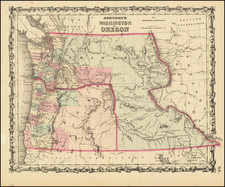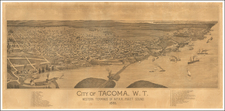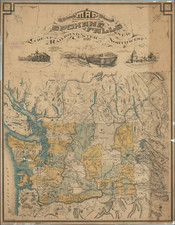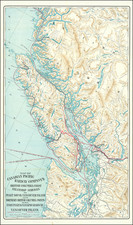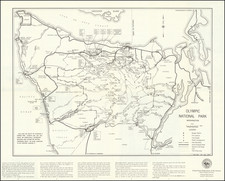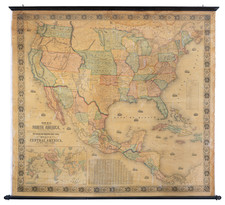Striking scene at Port Townsend, drawn by John Sykes during the Vancouver Expedition (1791-95).
The image shows nets used for hunting ducks by the locals.
Vancouver was the second foreign (non-Spanish) visitor to California. He had been instructed to explore the North Pacific, and to see that the provisions of the Nootka Convention were carried out. After meeting the Spanish commissioner at Nootka, he sailed down the coast and on November 14, 1792, entered San Francisco Bay in the Discovery. He was received by Comandante Sal at the presidio and by the padres at the mission. The British party was taken to visit Santa Clara Mission by the Spanish officials—the first time that foreigners had journeyed into the interior of California. Returning to San Francisco, Vancouver went to Monterey, where he was received cordially. Over the next 3 years, Vancouver would return to Monterey twice.
Three of John Sykes' illustrations while in California were included in the official account of Vancouver's expedition, A Voyage of Discovery to the North Pacific Ocean and Round the World, 1791-1795. Published in 1798 to wide public acclaim, Vancouver’s narrative greatly increased the European public’s knowledge about the Pacific Coast.
Born in England in 1773. Sykes joined the Royal Navy at age ten and became a midshipman on the Pacific Expedition led by Captain George Vancouver in the years 1792-94. He executed sepia wash drawings of the Presidio at Monterey and the Carmel Mission. Sykes remained in the navy for the rest of his life and was made an admiral shortly before his death in 1858.
George Vancouver (1757–1798), a naval officer and explorer, grew up in King’s Lynn, England, the youngest of six children. After entering the Royal Navy in 1771, he served in both the second and third great exploratory voyages of James Cook. During Cook’s second voyage, a three-year quest to find a legendary southern continent, Vancouver received instruction from the astronomer William Wales. During Cook’s third voyage, to the Pacific Northwest, Vancouver was part of the first known group of Europeans to land on the coast of present-day British Columbia.
Vancouver gained valuable navigational, surveying, and mapping experience in the Pacific Northwest during his time with Cook. After returning from Cook’s third voyage in 1780, Vancouver was promoted to lieutenant and spent the following nine years serving on fighting ships, primarily in the Caribbean.
In 1790, Vancouver was chosen to captain the Discovery and charged with a mission to discover and chart the vast areas of the Pacific that were still unknown, in part to locate a Northwest Passage between the Atlantic and Pacific Oceans. This four-year voyage of discovery circumnavigated the globe and eliminated the possibility of an inland Northwest Passage. During many months of surveying, Vancouver produced detailed regional maps of the Northwest Coast, as far north as Alaska. He also established several hundred place-names for physical features in the areas surveyed.
Upon returning to England in 1795, Vancouver’s voyage received little recognition, and he faced personal and political attacks from colleagues and crew members alleging abuse of power. With his health failing, Vancouver spent his remaining years in retirement, revising his journal for publication. His Voyage of Discovery to the North Pacific Ocean, and Round the World was first published in 1798, which was also the year of his death. It contained a multi-volume account of his voyage as well as an atlas of his maps. His exploration and mapmaking activities greatly increased knowledge of the North American coast.









